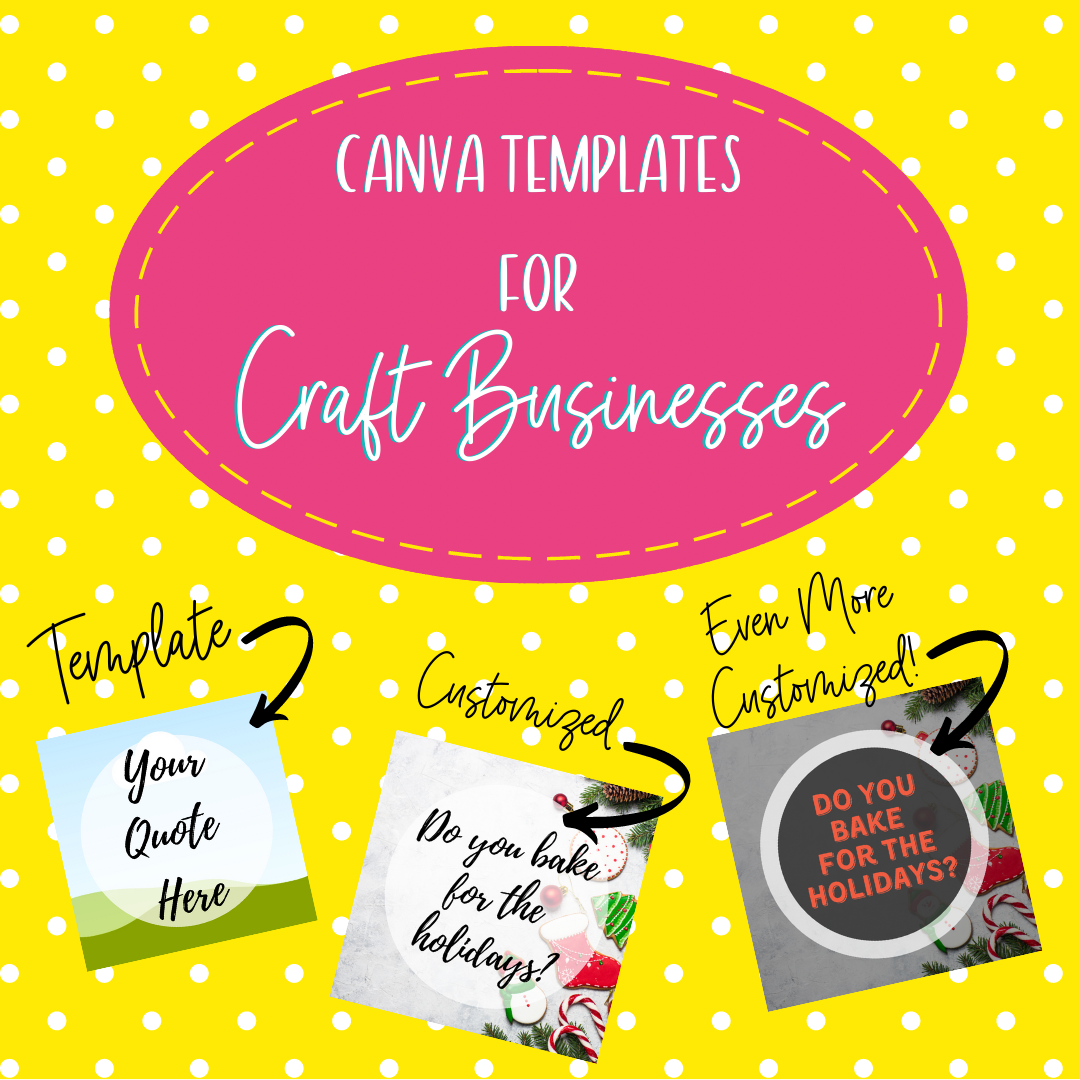Your go-to guide to mastering your in-person market experience
Freebie alert: Market Must-Haves for Makers
Blog Categories
An exclusive online membership for makers and creative business owners ready ditch the overwhelm and hustle for consistent sales and flexible schedules.
The Marketing School for Makers
Membership
Hi! I’m Lucy.
Chardonnay and vintage finds lover, founder of the handmade jewelry brand bel monili *and* your new guide to making your handmade business WORK online.
Hey, I'm Lucy
12 Top Tips to Increase Online Sales for Your Craft Business
Filed under:
How to increase online sales. It’s one of the biggest obstacles for most small business owners. Maybe you need a quick increase in funds, or you’re looking to develop your sales volume for a sustainable amount of time.
For online businesses, it can seem even more mysterious. You open a shop online and then…crickets. Where is everyone, and how can you let them know that your fabulous creations exist?
I’ve gathered a dozen top tips to increase online sales for your craft or handmade business. Some will give you a quick influx of cash. Others are more involved, but have the intention of increasing your overall sales over time. You can implement some or all of these and see how your business responds.
Let’s get started!
Disclosure: some of the links below are affiliate links, meaning, at no additional cost to you, I will earn a commission if you click through and make a purchase.
1 Know Your Perfect Customer Well
One of the biggest mistakes newbie entrepreneurs make is to assume that everyone is their target customer. If you’re a Bloom Student, you know that’s not true! We spend a lot of time finding our Perfect Customer (PC), because we know that they are the ones that love what we make and will come back to buy again and again.

Getting super clear on your PC is vital to the success of your business. Marketing specifically to them will help increase online sales overall, since you will be targeting the people who are most likely to purchase from you.
2 Offer Gift Wrap
Offering gift wrap is a nice way to increase your sales, and it can help in more than one way.
Charge a little bit for a gift wrapping service, and your customers can add it on to their orders, thereby increasing the average amount of your sales. Etsy offers a way to add gift wrap to your offerings, and you can find apps for Shopify that will do the same thing.
The service of gift wrap is something that many customers appreciate. So even if they don’t always use it, knowing that you’re a business that offers the service, they may be more likely to purchase from you now and in the future.
3 Expand Your Product Offering
Expanding your product offering doesn’t mean just making a lot of different products and seeing what “sticks”. Having too many items can actually reduce your sales because customers become confused or overwhelmed. And if you have a bunch of products in different “niches”, then potential customers won’t really understand what you’re “known” for, and they’re less likely to think of you when looking for something specific.
To expand your product offering smartly, think about items that might compliment the ones you’re already selling. And if what you make is more of a seasonal item, find a way to make new items that fill in the off-season gap.
For example, if you’re a knitter, what products could you make for the warmer months? Think about knit items that might work when bundling up is not required.
If you’re a jewelry maker, complimentary items may be earrings that match your signature necklace designs, or creating a bundle of bracelets that can be worn together.
4 Coupons or Special Promotions
I don’t feel that coupons and discounts should be used all the time, as they can decrease the perceived value of your work. However, offering a special promotion or coupon once in a while can definitely boost your sales, especially when they’re rarely offered.

A carefully timed sale or promotion can get customers excited to shop!
There are many different ways to offer a discount or promotion, and you can test them to see which ones your customers respond to the most. It may be a simple percent discount, or a “buy one get one” offer. Sometimes just including a “free gift with purchase” is enough to get people to spend a little more.
5 Increase Online Sales by Posting on Social Media
If you have yet to set up a social media account for your business, it may be time to jump into the pool! Social media can be a great way to increase traffic (and hopefully sales) for your online business.
Sharing your new creations, showing potential customers how others are using what you make, and giving followers a peek into your process can all help build trust and recognition, which in turn will lead to more sales.
You don’t need to post daily, just create a schedule that you can do consistently. You also do not need to post everywhere. Pick one platform where you feel your Perfect Customer hangs out the most, and concentrate on just that one.
6 Upselling and Cross Selling
If you have your own website such as Shopify, you can use an app to add cross selling and upselling options to your shop.
Offer products that compliment each other, such as offering a knit hat that would go great with the scarf they’re putting in their cart. Or, create add-on services that can increase the amount of the sale (such as gift wrapping, mentioned above.)
The app will present these options to your customers as their shopping, so it’s easy for them to add to cart.
7 Offer Free Shipping
I know, free shipping is one of those things that polarizes the creative entrepreneur community. But many studies show that offering free shipping increases sales, so it’s worth trying to see if this is true for your business.

Take the time to figure out your true shipping costs, and decide how you want to apply them to your individual products. Sometimes adding shipping costs to your item prices would make them way too expensive, so you can try doing a minimum order amount that qualifies for free shipping (“Free shipping for orders of $35 or more”).
8 Upgrade your Product Images to Increase Online Sales
Your images are critical to selling your creations online. Remember, your customers can’t touch or feel what you make, so your images need to be their senses! Make sure you take clear, bright images that show the scale of your items, textures, dimensions and how they can be used or worn.
If you have old images on your website or product listings, go through them and upgrade them! This is probably one of the biggest reasons why handmade sellers don’t get a lot of sales – your product images need to be the best they can be.
9 Invest in Ads
If you have the ability, try investing in some ads. Creating targeted ads can be a great way to increase your online sales. Create a profile of your perfect customer, and target this audience in your ads. If you have your own website like on Shopify, you can even create retargeting ads that are only shown to people who have already visited your website.
One thing to remember with social media ads, especially on Facebook, is that it takes time to see results. This isn’t a quick boost to your sales, but a slower strategy that will increase sales over time.
10 Build and use an email list
Another slower but dependable way to boost your online sales is to create and use an email list. Out of all the marketing techniques and paths, having an email list is the only audience that you truly “own”.
And if 2020 was any indication of what could happen in the world, having a list of fans and their contact information will help sustain your business if you lose other means of marketing or reaching people.
Intentionally build your email list and then use it! Share new products, information on your process, special promotions or deals you may be having. Set a consistent pattern for your emails – weekly, biweekly, once a month – whatever you feel comfortable with. Being consistent is more important than sending emails frequently.
11 SEO and Blogging to Increase Online Sales
Okay, don’t run away! SEO doesn’t have to be hard, I promise! And the more work you put into it now, the more reward you will see in the future.
SEO is Search Engine Optimization, and it means you are building pages on your website that are optimized to be found on Google. There is SO much information on SEO on the web, but you can start simple, like this guide on SEO for small business owners from Ahrefs.com.

Having a blog on your shop’s website helps with SEO too, plus it gives you content you can use and reuse across all social media platforms. Write articles highlighting new products, show your process of creation, and other aspects of your business you think your customers might be interested in.
Ultimately, your SEO work will get your product pages seen on Google more often, which will hopefully lead to more sales!
Read more about SEO for handmade businesses here.
12 Consider Wholesale
Wholesale is not for everyone, but if you make a product that would do well in small shops and boutiques, you may want to consider it.
Be wary of your pricing before you consider wholesale, however. When you first priced out your products, if you did not take wholesale into account, then your prices might not make it possible.
In general, wholesale pricing is 2x the cost to make the item. Retail pricing would then be double the wholesale price. (This is average and varies slightly depending on the product.)
While you make less per product in wholesale, you are fulfilling larger orders. For example, if you sell beaded bracelets retail for $12, then your wholesale price would be $6. If you have a boutique wholesale customer, they may purchase 50 bracelets from you, which would be a $300 order.
The other benefit of wholesale is that it gets your brand in front of new customers who may not shop online or just haven’t found you yet. And it can add an air of “legitimacy” to your brand if you’re able to tell customers where they can find your products in stores.
12 Top Tips to Increase Online Sales for Your Craft Business
I hope some (or all) of these tips will help you boost your online sales when you need it!
If you need help with creating content for social media, check out my Canva templates pack!
It has 150+ customizable Canva templates to take the frustration and overwhelm out of designing graphics.

Leave a Reply Cancel reply
You are in the right place, my creative friend!
After running bel monili (my handmade jewelry business) for 10 years, I launched Bloom in 2019 to create a community where handmade business owners could learn, grow, and support each other in this wild venture of small business ownership. Welcome to Bloom!
Join The MArketing School for Makers
follow
pin it
'Gram
watch
@bloombybelmonili